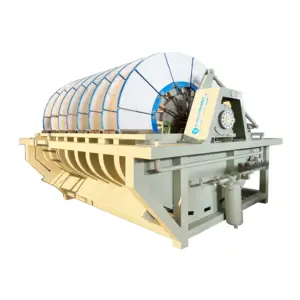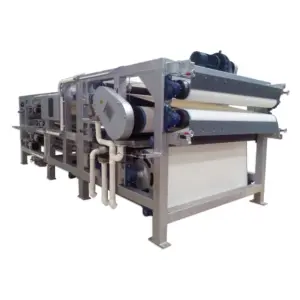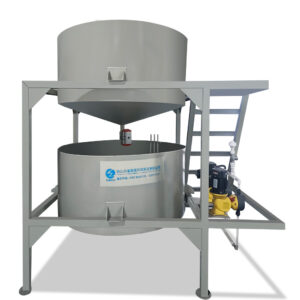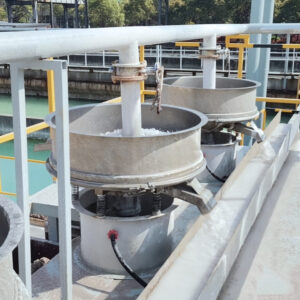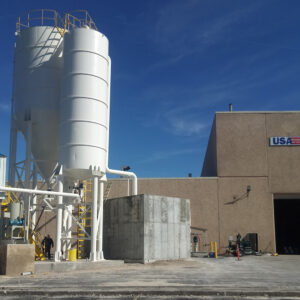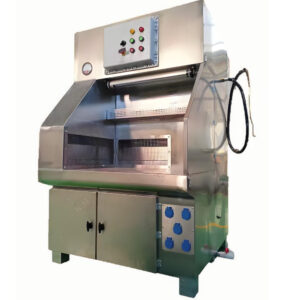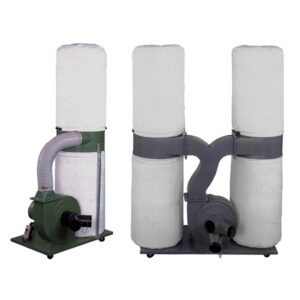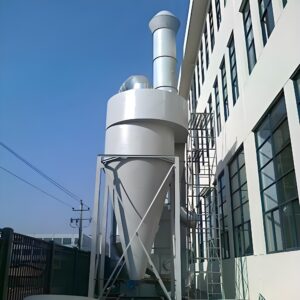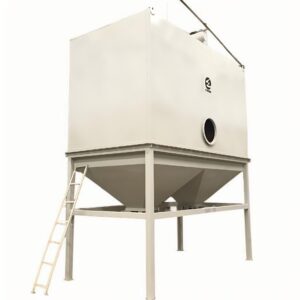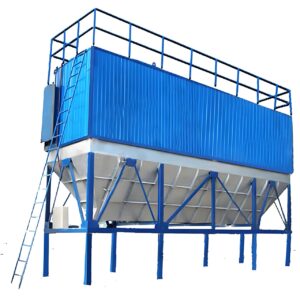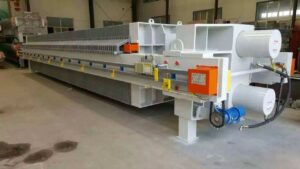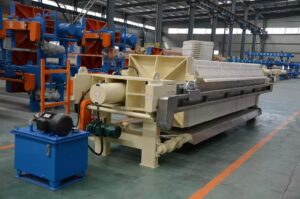De wereldwijde markt voor afvalwaterzuivering maakt een ongekende groei door, waarbij de kosten sterk variëren op basis van technologie, schaalgrootte en wettelijke vereisten. Naarmate de milieuwetgeving strenger wordt en de waterschaarste toeneemt, worden organisaties geconfronteerd met de kritieke uitdaging om de effectiviteit van de behandeling in balans te brengen met financiële duurzaamheid. Veel faciliteiten ontdekken dat de initiële kostenramingen achterblijven bij de werkelijke uitgaven, wat leidt tot budgetoverschrijdingen en operationele problemen.
Zonder de juiste kosten afvalwaterzuivering planning riskeren bedrijven boetes, milieuschade en onverwachte investeringen die de winstgevendheid ernstig kunnen beïnvloeden. Uit gegevens uit de sector blijkt dat 67% van de zuiveringsinstallaties hun initiële budget met 25-40% overschrijden, voornamelijk als gevolg van een ontoereikende kostenanalyse en onvoorziene operationele vereisten. De gevolgen reiken verder dan de onmiddellijke financiële druk en hebben invloed op het concurrentievermogen op lange termijn en de naleving van milieuwetgeving.
Deze uitgebreide gids biedt gedetailleerde kostenanalyses, strategieën voor budgetplanning en praktische inzichten voor het optimaliseren van uw investering in afvalwaterzuivering in 2025. We gaan in op technologiespecifieke prijzen, verborgen kosten en bewezen benaderingen om het rendement van uw zuiveringssysteem te maximaliseren, terwijl u tegelijkertijd voldoet aan de regelgeving en verantwoordelijk omgaat met het milieu.
Welke factoren bepalen de kosten van afvalwaterbehandeling in 2025?
Inzicht in de belangrijkste oorzaken van afvalwaterzuiveringskosten is essentieel voor een nauwkeurige budgetplanning. PORVOO Schone Technologie heeft verschillende kritieke factoren geïdentificeerd die een aanzienlijke invloed hebben op de totale behandelingskosten, variërend van de capaciteit van de faciliteit tot de keuze van de technologie en de vereisten voor naleving van de regelgeving.
Vereisten voor behandelingsvolume en -capaciteit
De meest fundamentele kostenfactor is het behandelingsvolume, met kosten afvalwaterzuiveringssysteem 2025 projecties die een niet-lineair verband laten zien tussen capaciteit en kosten. Kleinschalige systemen (minder dan 10.000 gallons per dag) kosten doorgaans $15-25 per gallon dagelijkse capaciteit, terwijl grote installaties (meer dan 1 miljoen gallons per dag) schaalvoordelen behalen bij $3-8 per gallon capaciteit.
Het beheer van piekdebieten voegt nog een extra laag complexiteit toe, met vereisten voor piekcapaciteit die de kosten met 20-35% verhogen. Installaties moeten rekening houden met seizoensgebonden variaties, productiepieken en noodscenario's bij het bepalen van de optimale systeemgrootte. Onze ervaring leert dat te kleine systemen exponentieel hogere langetermijnkosten veroorzaken door frequente upgrades en noodinterventies.
Complexiteit van verontreinigingen en behandelingsnormen
De specifieke verontreinigende stoffen in afvalwater hebben een directe invloed op de keuze van de behandelingstechnologie en de bijbehorende kosten. Biologische basisbehandeling voor organische verbindingen kost aanzienlijk minder dan geavanceerde systemen voor zware metalen, farmaceutische producten of complexe industriële chemicaliën. Behandelingsnormen variëren per lozingslocatie, waarbij directe rivierlozing een strengere behandeling vereist dan gemeentelijke rioleringssystemen.
| Type verontreiniging | Complexiteit behandeling | Kosten per 1000 liter |
|---|---|---|
| Organische verbindingen | Laag-Middelmatig | $2-6 |
| Zware metalen | Hoog | $8-15 |
| Farmaceutica | Zeer hoog | $12-25 |
| Gemengd industrieel | Variabele | $5-20 |
Geografische en locatiespecifieke factoren
De locatie heeft een grote invloed op zowel de installatiekosten als de operationele kosten. Afgelegen faciliteiten hebben te maken met hogere transportkosten voor apparatuur, beperkte beschikbaarheid van serviceproviders en een grotere behoefte aan voorraden reserveonderdelen. Overwegingen met betrekking tot het klimaat zijn van invloed op het energieverbruik, waarbij koude regio's extra verwarmingssystemen vereisen en warme klimaten een grotere koelcapaciteit vereisen.
De voorbereidingskosten voor de locatie variëren sterk afhankelijk van de bestaande infrastructuur, bodemgesteldheid en milieubeperkingen. Rotsachtig terrein, hoog grondwater of vervuilde grond kunnen de installatiekosten met 40-60% verhogen. Daarnaast zorgen lokale arbeidstarieven, vergunningsvereisten en beschikbaarheid van nutsvoorzieningen voor aanzienlijke regionale kostenverschillen.
Hoeveel kost een industrieel afvalwaterzuiveringssysteem?
Industriële afvalwaterzuivering vertegenwoordigt een van de belangrijkste kapitaalinvesteringen voor productiefaciliteiten. Kostenanalyses laten aanzienlijke variaties zien op basis van industrietype, complexiteit van de behandeling en systeemconfiguratie, waarbij de prognoses voor 2025 wijzen op een aanhoudende opwaartse druk op apparatuur en operationele kosten.
Opsplitsing kapitaalinvestering
Prijzen voor de behandeling van industrieel afvalwater omvat meerdere kostencategorieën, waarbij apparatuur doorgaans 40-55% van de totale projectkosten vertegenwoordigt. Voor een uitgebreide industriële zuiveringsinstallatie van 100.000 gallon per dag is een investering nodig van $800.000-1.500.000, afhankelijk van de behandelingstechnologie en de locatievereisten.
Bouw- en installatiekosten zijn goed voor 25-35% van de totale projectkosten en variëren aanzienlijk afhankelijk van de complexiteit van het systeem en de omstandigheden ter plaatse. Elektrische en instrumentatiesystemen vertegenwoordigen 15-20% van de kapitaalkosten, waarbij geavanceerde automatiserings- en bewakingssystemen een hogere prijs vragen maar aanzienlijke operationele besparingen opleveren.
Engineering en projectmanagement nemen doorgaans 8-12% van de totale projectkosten in beslag, terwijl vergunningen en naleving van regelgeving daar nog eens 3-5% aan toevoegen. Deze ogenschijnlijk kleine percentages kunnen bij grote projecten aanzienlijke absolute kosten vertegenwoordigen, wat het belang van een uitgebreide budgetplanning benadrukt.
Technologie-specifieke kostenvergelijkingen
Verschillende behandelingstechnologieën bieden verschillende kostenprofielen, waarbij biologische behandelingssystemen over het algemeen de laagste operationele kosten bieden voor organische verontreinigingen. Geavanceerde oxidatieprocessen brengen hogere kapitaal- en operationele kosten met zich mee, maar behandelen complexe verontreinigingen die biologische systemen niet effectief kunnen behandelen.
Membraanbioreactoren (MBR's) vormen een middenweg en bieden een compact oppervlak en een consistente effluentkwaliteit tegen een gematigde kostprijs. Onze analyse geeft aan dat MBR-systemen 20-30% meer kosten dan conventionele actiefslibsystemen, maar superieure prestaties leveren en minder ruimte in beslag nemen.
Fysisch-chemische behandelingssystemen blinken uit in toepassingen die een precieze verwijdering van verontreinigingen vereisen, maar vereisen doorgaans een hoger chemicaliënverbruik en genereren meer vast afval. Deze systemen dienen vaak als polijststappen in meertrapsbehandelingsprocessen en voegen $200.000-500.000 toe aan uitgebreide behandelingsoplossingen.
Wat zijn de belangrijkste onderdelen van budgetplanning voor waterbehandeling?
Effectief budgetplanning waterzuivering vereist een systematische evaluatie van alle kostencomponenten gedurende de gehele levenscyclus van het systeem. Veel organisaties richten zich voornamelijk op de kapitaalkosten en onderschatten de operationele kosten, wat leidt tot begrotingstekorten en operationele uitdagingen.
Planning van kapitaalkosten
De initiële kapitaalplanning moet de aanschaf van apparatuur, installatie, voorbereiding van de locatie en inbedrijfstelling van het systeem omvatten. De kosten van apparatuur variëren aanzienlijk op basis van constructiemateriaal, automatiseringsniveau en prestatievereisten. De constructie van roestvrij staal maakt de apparatuur 25-40% duurder, maar biedt een superieure levensduur in corrosieve omgevingen.
De voorbereidingskosten worden vaak onderschat, vooral bij retrofit-toepassingen waarbij bestaande infrastructuur moet worden aangepast. Aansluitingen op nutsvoorzieningen, inclusief upgrades van de elektrische voeding en de toevoer van proceswater, kunnen 15-25% van de totale projectkosten vertegenwoordigen. Een goede evaluatie van de locatie tijdens de planningsfasen voorkomt dure verrassingen tijdens de bouw.
| Kostencomponent | Percentage van totaal | Typisch bereik |
|---|---|---|
| Uitrusting | 40-55% | $400k-$800k |
| Installatie | 25-35% | $250k-$500k |
| Voorbereiding van de locatie | 10-15% | $100k-$225k |
| Engineering | 8-12% | $80k-$180k |
| Vergunning | 3-5% | $30k-$75k |
Prognoses operationele kosten
De operationele kosten zijn doorgaans binnen 3-5 jaar hoger dan de kapitaalkosten, waardoor nauwkeurige operationele prognoses cruciaal zijn voor budgetplanning op de lange termijn. Energieverbruik is de grootste operationele kostenpost, goed voor 30-45% van de jaarlijkse operationele kosten. De stijgende energieprijzen in 2025 hebben een aanzienlijke invloed op de economische aspecten van de zuivering, met elektriciteitskosten die in veel regio's jaarlijks 8-12% stijgen.
Chemische kosten variëren enorm afhankelijk van de behandelingstechnologie en de waterkwaliteitseisen. Biologische systemen minimaliseren het chemicaliënverbruik, maar vereisen zorgvuldig beheer van voedingsstoffen en pH-regeling. Chemische neerslagsystemen verbruiken aanzienlijke hoeveelheden coagulanten en flocculanten, met jaarlijkse chemische kosten variërend van $50.000-200.000 voor middelgrote installaties.
Arbeidskosten zijn sterk afhankelijk van het automatiseringsniveau van het systeem en de operationele complexiteit. Sterk geautomatiseerde systemen verlagen de arbeidsvereisten, maar vereisen geschoolde technici voor onderhoud en probleemoplossing. Handmatige systemen vragen meer operationele aandacht maar kunnen minder gespecialiseerd personeel gebruiken.
Overwegingen voor onderhoud en levenscyclus
Preventieve onderhoudsprogramma's hebben een grote invloed op de betrouwbaarheid en kosten van systemen op de lange termijn. Goed onderhouden systemen bereiken een uptime van 95-98%, terwijl verwaarloosde installaties vaak storingen vertonen en voortijdig componenten moeten vervangen. Jaarlijkse onderhoudskosten variëren doorgaans van 3-7% van de kapitaalinvestering, waarbij complexe systemen hogere onderhoudsbudgetten vereisen.
Vervangingsschema's voor onderdelen variëren per type apparatuur en bedrijfsomstandigheden. Pompen en blowers moeten meestal elke 8-12 jaar worden vervangen, terwijl goed onderhouden tanks en leidingen 25-30 jaar mee kunnen gaan. Membraansystemen moeten om de 3-5 jaar worden vervangen, wat aanzienlijke lopende kosten met zich meebrengt die dienovereenkomstig moeten worden begroot.
Welke invloed hebben verschillende behandelingstechnologieën op de prijs?
De keuze van technologie heeft een grote invloed op zowel de kapitaal- als de operationele kosten, waarbij elke aanpak zijn eigen voordelen en beperkingen heeft. Inzicht in deze kostenimplicaties maakt weloverwogen besluitvorming mogelijk waarbij een balans wordt gevonden tussen de effectiviteit van de behandeling en financiële duurzaamheid.
Biologische behandelingssystemen
Biologische behandelingssystemen bieden de meest kosteneffectieve oplossing voor het verwijderen van organische verontreinigingen, met kostenanalyse afvalwaterbehandeling consequent de voorkeur aan biologische benaderingen voor geschikte toepassingen. Activated sludge systemen vertegenwoordigen de industriestandaard en leveren betrouwbare prestaties tegen gematigde kosten.
Conventionele actiefslibsystemen vereisen een kapitaalinvestering van $500.000-1.200.000 voor een capaciteit van 100.000 GPD, met operationele kosten die variëren van $1,50-3,00 per 1000 behandelde gallons. Deze systemen blinken uit in het verwerken van hoge organische belastingen, maar vereisen een vakkundige bediening en zorgvuldige procesbeheersing om optimale prestaties te behouden.
Membraanbioreactoren combineren biologische behandeling met membraanfiltratie en produceren effluent van hogere kwaliteit in een kleinere ruimte. Hoewel de kapitaalkosten 20-30% hoger liggen dan bij conventionele systemen, rechtvaardigen de operationele voordelen, zoals een lagere slibproductie en een superieure effluentkwaliteit, vaak de extra investering.
Geavanceerde oxidatieprocessen
Geavanceerde oxidatieprocessen (AOP's) blinken uit in het behandelen van moeilijk afbreekbare verontreinigingen die biologische behandeling weerstaan, maar vragen een hogere prijs. Ozonsystemen vereisen een kapitaalinvestering van $800.000-2.000.000 voor middelgrote toepassingen, met operationele kosten variërend van $3,00-8,00 per behandelde 1000 liter.
UV-waterstofperoxidesystemen bieden een effectieve behandeling voor farmaceutische verbindingen en complexe organische stoffen, maar vereisen een aanzienlijke energie-input en chemisch verbruik. Deze systemen dienen meestal als polijststappen in meertrapsbehandelingsprocessen, waardoor ze $300.000-800.000 toevoegen aan uitgebreide behandelingsoplossingen.
Elektrochemische oxidatie is een opkomende technologie die een nauwkeurige controle van verontreinigingen biedt met een minimale toevoeging van chemicaliën. Hoewel de kapitaalkosten hoog blijven, maken de operationele eenvoud en het verminderde chemicaliënverbruik deze systemen steeds aantrekkelijker voor gespecialiseerde toepassingen.
Fysisch-chemische behandeling
Fysisch-chemische behandelingssystemen zorgen voor een snelle verwijdering van verontreinigingen en een uitstekende procesbeheersing, maar vereisen doorgaans een hoger chemisch verbruik dan biologische alternatieven. Geavanceerde afvalwaterzuiveringssystemen met fysisch-chemische processen die betrouwbare prestaties leveren bij verschillende influentomstandigheden.
Coagulatie- en flocculatiesystemen verwijderen effectief vaste stoffen in suspensie en metalen tegen matige kosten, met investeringen in apparatuur variërend van $200.000-600.000 voor middelgrote toepassingen. Chemische kosten vertegenwoordigen 40-60% van de operationele kosten, waardoor deze systemen gevoelig zijn voor chemische prijsschommelingen.
Adsorptiesystemen met actieve kool bieden een uitstekende verwijdering van organische verbindingen en sporen van verontreiniging, maar vereisen periodieke vervanging van de koolstof. De koolstofkosten variëren van $30.000-100.000 per jaar voor middelgrote installaties, waarbij de verwijdering van gebruikte koolstof nog extra kosten met zich meebrengt.
Wat zijn de verborgen kosten in afvalwaterbehandelingssystemen?
Naast de voor de hand liggende kapitaal- en operationele kosten, kunnen tal van verborgen kosten de rendabiliteit van behandelingssystemen aanzienlijk beïnvloeden. Deze vaak over het hoofd geziene kosten veroorzaken vaak budgetoverschrijdingen en operationele problemen, waardoor een uitgebreide kostenanalyse essentieel is voor een succesvolle projectplanning.
Naleving van regelgeving en vergunningen
Naleving van de regelgeving betekent een aanzienlijke doorlopende kostenpost die veel verder gaat dan de initiële vergunningskosten. De jaarlijkse kosten voor een lozingsvergunning variëren van $5.000-50.000, afhankelijk van de grootte van de installatie en het lozingsvolume, met bijkomende kosten voor verplichte monitoring en rapportering.
Voor milieumonitoring is gespecialiseerde apparatuur en deskundig personeel nodig, waardoor de operationele kosten jaarlijks met $25.000-100.000 toenemen. De kosten voor laboratoriumanalyses voor vereiste tests variëren van $500-2.000 per maand, afhankelijk van de complexiteit van de parameters en de testfrequentie. Deze kosten blijven tijdens de hele werking van het systeem doorlopen en nemen meestal toe naarmate de regelgeving strenger wordt.
Compliance overtredingen brengen aanzienlijke financiële sancties met zich mee, met boetes variërend van $10.000-100.000 per incident. Naast onmiddellijke boetes kunnen overtredingen leiden tot strengere controlevereisten en operationele beperkingen die de kosten op lange termijn aanzienlijk verhogen.
Noodrespons- en back-upsystemen
Systeemstoringen kunnen leiden tot catastrofale uitgaven als er geen goede back-upsystemen worden geïmplementeerd. De kosten voor het reageren op noodsituaties, inclusief insluiting, opruimen en kennisgevingen van regelgevende instanties, kunnen oplopen tot meer dan $100.000 voor significante incidenten. Uit onze ervaring blijkt dat installaties zonder adequate back-upsystemen 3-5 keer hogere kosten hebben om te reageren op noodsituaties dan goed beveiligde installaties.
Back-up stroomsystemen verhogen de kapitaalkosten met $50.000-200.000, maar voorkomen kostbare onderbrekingen van de behandeling tijdens stroomuitval. Noodopvangsystemen inclusief reservepompen en tijdelijke opslag vormen een extra verzekering tegen operationele storingen.
Personeelstraining en programma's om voorbereid te zijn op noodsituaties vereisen voortdurende investeringen, maar verminderen de kans op en de ernst van incidenten aanzienlijk. De jaarlijkse opleidingskosten variëren van $10.000-30.000 voor middelgrote installaties, maar leveren aanzienlijke voordelen op voor risicovermindering.
Afvalbeheer en -verwijdering
Slibbeheer vertegenwoordigt een grote lopende uitgave die aanzienlijk varieert op basis van de behandelingstechnologie en lokale verwijderingsopties. De kosten voor het afvoeren van ontwaterd slib variëren van $50-300 per ton, waarbij gevaarlijk afval dat speciale behandeling en afvoer vereist een hogere prijs heeft.
Transportkosten voor afvalverwijdering kunnen aanzienlijk zijn, vooral voor afgelegen faciliteiten. Vervoer over lange afstanden kost $100-500 per lading, waardoor verwerking en volumereductie ter plaatse steeds aantrekkelijker worden, ondanks de hogere kapitaalvereisten.
De vereisten voor het karakteriseren en testen van afval brengen extra kosten met zich mee die toenemen naarmate het afval complexer is. Karakterisering van gevaarlijk afval kost $500-2.000 per analyse, waarbij testen vereist zijn voor elke afvaltransport of elk kwartaal, afhankelijk van wat het vaakst voorkomt.
Hoe optimaliseert u de investeringsstrategie voor uw afvalwatersysteem?
Strategische optimalisatie van investering in afvalwatersysteem vereist een uitgebreide evaluatie van technologische opties, financieringsalternatieven en operationele strategieën. Succesvolle optimalisatie brengt de kosten vooraf in evenwicht met operationele efficiëntie op de lange termijn en vereisten voor naleving van de regelgeving.
Technologie Selectie Optimalisatie
Bij de keuze van technologie moet prioriteit worden gegeven aan de totale eigendomskosten in plaats van aan het minimaliseren van de initiële kapitaalinvestering. Een analyse van de levenscycluskosten laat zien dat energie-efficiënte technologieën op de lange termijn vaak voordeliger zijn, ondanks de hogere initiële kosten. Systemen met 15-20% hogere kapitaalkosten leveren vaak 30-40% operationele besparingen op gedurende hun levensduur.
Modulaire systeemontwerpen bieden flexibiliteit voor toekomstige uitbreiding en technologie-upgrades, waardoor investeringsrisico's op lange termijn worden beperkt. De selectie van gestandaardiseerde apparatuur vereenvoudigt de inventarisatie van reserveonderdelen en de onderhoudsvereisten, waardoor de operationele kosten met 10-15% dalen in vergelijking met op maat gemaakte oplossingen.
Bij de implementatie van automatisering moet een balans worden gevonden tussen arbeidsbesparing en systeemcomplexiteit. Goed ontworpen automatiseringssystemen verminderen de benodigde arbeid met 40-60% en verbeteren tegelijkertijd de consistentie van de behandeling en de naleving van de regelgeving. Te veel automatisering kan echter het onderhoud complexer maken en gespecialiseerde technische ondersteuning vereisen.
Financiering en economische optimalisatie
Er bestaan meerdere financieringsopties voor afvalwaterzuiveringsprojecten, die elk hun eigen voordelen en beperkingen hebben. Traditionele financiering van apparatuur biedt voorspelbare betalingen, maar vereist aanzienlijke aanbetalingen en dekt mogelijk niet de totale projectkosten. Lease-overeenkomsten bieden lagere initiële kosten, maar resulteren doorgaans in hogere totale kosten gedurende de levensduur van de apparatuur.
| Financieringsoptie | Aanbetaling | Rentevoet | Totale kostenimpact |
|---|---|---|---|
| Traditionele lening | 20-30% | 6-9% | Basislijn |
| Materiële lease | 0-10% | 8-12% | +15-25% |
| Gemeentelijke obligaties | Variabele | 4-6% | -10-15% |
| Subsidie | 0% | 0% | -25-50% |
Overheidspremies en subsidieprogramma's kunnen de projectkosten aanzienlijk verlagen, waarbij milieusubsidies 25-75% van de in aanmerking komende kosten dekken. Belastingprikkels zoals versnelde afschrijving en investeringsaftrek bieden extra financiële voordelen die de rendabiliteit van het project verbeteren.
Strategieën voor operationele efficiëntie
Initiatieven voor procesoptimalisatie kunnen de operationele kosten met 20-35% verlagen zonder de doeltreffendheid van de behandeling in gevaar te brengen. Energieoptimalisatie door middel van upgrades van apparatuur, procesaanpassingen en operationele aanpassingen levert doorgaans een terugverdientijd van 18-24 maanden op.
Voorspellende onderhoudsprogramma's die gebruik maken van geavanceerde bewakingssystemen verlagen de onderhoudskosten met 25-40% terwijl de betrouwbaarheid van het systeem verbetert. Deze programma's vereisen een initiële investering in bewakingsapparatuur, maar bieden aanzienlijke voordelen op lange termijn door minder stilstand en een langere levensduur van de apparatuur.
Chemische optimalisatie door procesaanpassingen en alternatieve chemische selectie kan de chemische kosten met 15-30% verlagen. Professionele oplossingen voor afvalwaterbehandeling chemische optimalisatiestrategieën in te zetten die de operationele kosten minimaliseren en tegelijkertijd de effectiviteit van de behandeling behouden.
Wat zijn de financiële voordelen op lange termijn van de juiste behandeling?
Investeren in een goede afvalwaterzuivering levert op lange termijn tal van financiële voordelen op die veel verder gaan dan naleving van de regelgeving. Deze voordelen rechtvaardigen vaak hoogwaardige behandelingstechnologieën en uitgebreide systeemontwerpen die duur lijken als ze alleen op de initiële kosten worden beoordeeld.
Risicobeperking door regelgeving
De juiste behandelingssystemen elimineren het risico op overtredingen van de regelgeving die kunnen leiden tot aanzienlijke boetes en operationele beperkingen. De milieusancties zijn de afgelopen jaren drastisch toegenomen, met gemiddelde boetes van meer dan $150.000 per incident. Uitgebreide behandelingssystemen bieden een verzekering tegen deze risico's en maken tegelijkertijd operationele flexibiliteit mogelijk.
Naleving van de regelgeving beschermt ook tegen ernstigere gevolgen, zoals sluiting van faciliteiten en strafrechtelijke vervolging. Deze extreme gevolgen kunnen resulteren in miljoenen dollars aan gederfde inkomsten en juridische kosten, waardoor goede behandelingssystemen een cruciale investering in bedrijfscontinuïteit zijn.
Toekomstige wijzigingen in de regelgeving gaan steeds in de richting van strengere eisen, waardoor robuuste behandelingssystemen na verloop van tijd steeds waardevoller worden. Systemen die zijn ontworpen om de huidige eisen te overtreffen, voldoen vaak zonder aanpassing aan toekomstige regelgeving, waardoor kostbare aanpassingen en upgrades worden vermeden.
Mogelijkheden voor terugwinning en hergebruik van hulpbronnen
Geavanceerde behandelingssystemen maken mogelijkheden voor hergebruik van water mogelijk die het verbruik van zoet water en de bijbehorende kosten verminderen. Hergebruik van industrieel proceswater kan de waterkosten met 30-60% verlagen en tegelijk proceswater van constante kwaliteit leveren. Suppletiewater uit koeltorens is een bijzonder aantrekkelijke toepassing voor hergebruik met minimale aanvullende behandelingsvereisten.
Het terugwinnen van voedingsstoffen uit afvalwaterstromen creëert mogelijkheden om inkomsten te genereren en tegelijkertijd de afvoerkosten te verlagen. Systemen voor fosforterugwinning genereren jaarlijks $20.000-80.000 inkomsten voor middelgrote installaties, terwijl ze de kosten voor chemicaliën en de impact op het milieu verlagen.
Energieterugwinning door biogasproductie en warmteterugwinningssystemen kan 25-50% van het energieverbruik van het behandelingssysteem compenseren. Deze systemen vereisen extra kapitaalinvesteringen, maar leveren aanzienlijke operationele besparingen en betere milieuprestaties op.
Eigendomswaarde en bedrijfscontinuïteit
Deugdelijke afvalwaterzuiveringssystemen verhogen de waarde van onroerend goed en de verkoopbaarheid van bedrijven. Installaties met uitgebreide zuiveringssystemen krijgen een hogere verkoopprijs en worden tijdens bedrijfstransacties geconfronteerd met minder problemen op het gebied van due diligence. Milieuverplichtingen in verband met ontoereikende afvalwaterzuivering kunnen de waarde van onroerend goed aanzienlijk verlagen en de verkoop van bedrijven bemoeilijken.
Voordelen voor de bedrijfscontinuïteit zijn onder andere minder operationele onderbrekingen en een groter vertrouwen van de klant. Klanten beoordelen leveranciers steeds vaker op basis van milieuprestaties, waardoor goede zuiveringssystemen een concurrentievoordeel vormen. Verstoringen in de toeleveringsketen als gevolg van milieuproblemen kunnen resulteren in verlies van klanten en inkomsten die veel hoger zijn dan de kosten van het behandelingssysteem.
Hoe kies je kosteneffectieve behandelingsoplossingen?
Het selecteren van kosteneffectieve behandelingsoplossingen vereist een systematische evaluatie van technologische opties, mogelijkheden van leveranciers en operationele vereisten op de lange termijn. De optimale oplossing brengt de effectiviteit van de behandeling, de operationele betrouwbaarheid en de totale eigendomskosten in balans en biedt tegelijkertijd flexibiliteit voor toekomstige vereisten.
Evaluatie en selectie van leveranciers
De keuze van een leverancier heeft een grote invloed op het succes van een project en de kosten op lange termijn. Ervaren leveranciers bieden uitgebreide ondersteuning, inclusief systeemontwerp, installatie, inbedrijfstelling en doorlopend onderhoud. Hoewel gevestigde leveranciers een hogere prijs kunnen vragen, rechtvaardigen hun ervaring en ondersteuningsmogelijkheden de extra kosten vaak door betere projectresultaten.
Lokale aanwezigheid van leveranciers verkort de reactietijden en de reiskosten, wat doorlopende operationele voordelen oplevert. Gespecialiseerde technologieën kunnen echter leveranciers vereisen met beperkte lokale aanwezigheid, waardoor mogelijkheden voor ondersteuning op afstand en lokale partnerschappen cruciale selectiecriteria worden.
Financiële stabiliteit en een lange levensduur zijn cruciale factoren bij de selectie van leveranciers, aangezien behandelingssystemen tientallen jaren voortdurende ondersteuning nodig hebben. Leveranciers met een sterke financiële positie en gevestigde servicenetwerken bieden een grotere zekerheid op de beschikbaarheid van onderdelen en technische ondersteuning op de lange termijn.
Systeemontwerp en integratie
Een uitgebreid systeemontwerp houdt rekening met de huidige vereisten en biedt tegelijkertijd flexibiliteit voor toekomstige uitbreiding en aanpassing. Modulaire ontwerpen maken een gefaseerde implementatie mogelijk waarbij de kapitaalkosten in de tijd worden gespreid terwijl de effectiviteit van de behandeling behouden blijft. Deze aanpak is vooral gunstig voor groeiende faciliteiten met veranderende behandelingsvereisten.
Integratie met bestaande infrastructuur vermindert installatiekosten en operationele complexiteit. Geïntegreerde afvalwaterzuiveringssystemen die naadloos aansluiten op bestaande processen minimaliseren verstoringen en installatiekosten terwijl ze de operationele efficiëntie maximaliseren.
Standaardisatie van apparatuur en componenten vereenvoudigt het onderhoud en verlaagt de voorraadvereisten voor reserveonderdelen. Terwijl op maat gemaakte oplossingen marginale prestatievoordelen kunnen bieden, zorgen gestandaardiseerde systemen meestal voor superieure rendabiliteit op lange termijn dankzij minder complex onderhoud en beschikbaarheid van onderdelen.
Prestatiegaranties en risicobeheer
Prestatiegaranties bieden financiële bescherming tegen slechte prestaties van het systeem en leggen tegelijkertijd duidelijke verwachtingen voor de effectiviteit van de behandeling vast. Uitgebreide garanties moeten betrekking hebben op de kwaliteit van het effluent, het energieverbruik en de operationele betrouwbaarheid om ervoor te zorgen dat de systemen voldoen aan de langetermijnvereisten.
De garantiedekking varieert aanzienlijk tussen leveranciers en technologieën, waarbij uitgebreide garanties een aanzienlijke waarde bieden door de onderhoudsrisico's te beperken. Uitgebreide garantieopties bieden vaak een uitstekende waarde voor kritieke systemen waar de kosten van stilstand hoog zijn.
Risicobeheerstrategieën zoals back-upsystemen, noodplannen en verzekeringsdekking beschermen tegen operationele storingen en de bijbehorende kosten. Hoewel deze maatregelen extra investeringen vereisen, bieden ze cruciale bescherming tegen catastrofale uitgaven die de kosten van het behandelingssysteem ver kunnen overstijgen.
Conclusie
De kostenplanning voor afvalwaterzuivering voor 2025 vereist een uitgebreide analyse van kapitaalinvesteringen, operationele kosten en verborgen kosten die een aanzienlijke invloed hebben op de totale systeemeconomie. Succesvolle budgetplanning erkent dat initiële kapitaalkosten, hoewel aanzienlijk, slechts een deel vormen van de totale levenscycluskosten die zich uitstrekken over tientallen jaren van exploitatie van het systeem.
De meest kosteneffectieve behandelingsoplossingen een evenwicht te vinden tussen investeringen vooraf en operationele efficiëntie op de lange termijn, naleving van regelgeving en toekomstige flexibiliteit. Organisaties die prioriteit geven aan de totale eigendomskosten in plaats van aan het minimaliseren van de initiële uitgaven, behalen consequent superieure resultaten op de lange termijn en beschermen zich tegelijkertijd tegen risico's op het gebied van regelgeving en operationele verstoringen.
De keuze van de technologie moet worden afgestemd op de specifieke behandelingsvereisten, waarbij rekening moet worden gehouden met de operationele complexiteit, onderhoudsvereisten en toekomstige uitbreidingsbehoeften. Geavanceerde behandelingstechnologieën rechtvaardigen vaak een hogere prijs door superieure prestaties, lagere operationele kosten en betere mogelijkheden om aan de regelgeving te voldoen.
In de toekomst zullen de kosten voor afvalwaterzuivering blijven stijgen als gevolg van strengere milieuvoorschriften, hogere energiekosten en toenemende zorgen over waterschaarste. Organisaties die investeren in uitgebreide behandelingssystemen positioneren zichzelf nu voor succes op de lange termijn en dragen tegelijkertijd bij aan een duurzaam milieu en het behoud van hulpbronnen.
Voor faciliteiten die investeringen in afvalwaterzuivering plannen, werken we samen met ervaren professionals die de complexiteit van systeemontwerp, installatie en bediening begrijpen. Uitgebreide oplossingen voor afvalwaterbehandeling de expertise en ondersteuning bieden die nodig zijn om de behandelingsprestaties te optimaliseren en tegelijkertijd de kosten effectief te beheren.
Met welke specifieke uitdagingen wordt uw bedrijf geconfronteerd bij het plannen van de kosten van afvalwaterbehandeling en hoe kunnen geavanceerde behandelingstechnologieën aan deze vereisten voldoen en tegelijkertijd economische voordelen op de lange termijn bieden?
Veelgestelde vragen
Q: Welke factoren beïnvloeden de kosten voor afvalwaterzuivering in de budgetplanning voor 2025?
A: De kosten voor afvalwaterzuivering in de budgetplanning voor 2025 worden beïnvloed door verschillende belangrijke factoren:
- Kapitaalkosten voor grootschalige infrastructuurupgrades en systeemverbeteringen.
- Bedrijfskosten, inclusief kosten voor onderhoud, arbeid en energie.
- Inflatiecorrecties die de stijgende bouw- en operationele kosten weerspiegelen.
- Wettelijke vereisten die aanvullende behandelingsprocessen kunnen vereisen.
- Aansluitkosten voor nieuwe gebruikers die de financiering van uitbreidingen van faciliteiten ondersteunen.
Inzicht in deze elementen helpt bij het opstellen van een realistisch budget dat een evenwicht biedt tussen kortetermijnuitgaven en langetermijninvesteringen in de afvalwaterinfrastructuur.
Q: Hoe kunnen gemeenschappen hun afvalwaterzuiveringsbudget voor 2025 effectief plannen?
A: Effectieve budgetplanning voor afvalwaterzuivering in 2025 houdt in:
- De huidige facilitaire behoeften beoordelen en toekomstige kapitaalverbeteringen identificeren.
- Middelen toewijzen tussen kapitaalprojecten en dagelijkse bedrijfskosten.
- Inflatiefactoren en verwachte wijzigingen in regelgeving opnemen in financiële prognoses.
- Betrokkenheid van belanghebbenden en belastingbetalers om transparantie en eerlijkheid bij tariefaanpassingen te garanderen.
- Gefaseerde projectimplementatie gebruiken om de cashflow te beheren en de financiële druk te verminderen.
Deze gestructureerde aanpak zorgt voor duurzaam afvalwaterbeheer zonder onverwachte financiële lasten.
Q: Wat zijn typische budgetcomponenten die worden meegenomen bij het schatten van de kosten voor afvalwaterzuivering in 2025?
A: De typische onderdelen zijn onder andere:
- Kapitaaluitgaven voor upgrades van faciliteiten, vervanging van pijpleidingen en aankoop van apparatuur.
- Bedrijfskosten zoals nutsvoorzieningen, personeelssalarissen, chemische benodigdheden en routineonderhoud.
- Administratieve kosten en nalevingskosten in verband met rapportage en milieubewaking.
- Aansluitkosten en toeslagen om uitbreidingen of speciale programma's te financieren.
- Reserve voor onvoorziene uitgaven of noodgevallen.
Samen geven deze componenten een uitgebreid beeld van de totale afvalwaterzuiveringskosten voor een effectieve budgetplanning.
Q: Waarom ligt de nadruk op kapitaalintensieve projecten in het budget voor afvalwaterbehandeling voor 2025?
A: Kapitaalintensieve projecten domineren het afvalwaterzuiveringsbudget voor 2025 omdat:
- Verouderende infrastructuur vereist grote upgrades of vervangingen om de prestaties op peil te houden.
- Uitbreidingen zijn nodig om de bevolkingsgroei en de toegenomen vraag naar diensten op te vangen.
- Nieuwe technologieën en milieuregelgeving vereisen kostbare verbeteringen.
- Grootschalige projecten zoals upgrades van pompstations en verbeteringen aan het vergistingssysteem zorgen voor duurzaamheid op de lange termijn.
Deze focus ondersteunt de betrouwbaarheid en efficiëntie van afvalwaterzuiveringssystemen in de loop der tijd en voldoet aan de wettelijke normen.
Q: Welke invloed hebben inflatie en tariefaanpassingen op de kosten- en budgetplanning van afvalwaterzuivering voor 2025?
A: Inflatie en tariefaanpassingen hebben een aanzienlijke invloed op zowel de kosten als de inkomsten:
- Jaarlijkse inflatie verhoogt de bouw- en operationele kosten met een paar procentpunten, wat in de begrotingen moet worden opgenomen.
- Tariefaanpassingen, waaronder maandelijkse kosten en aansluitkosten, worden doorgevoerd om de stijgende kosten te compenseren.
- Zo helpt een typische jaarlijkse tariefstijging van ongeveer 3% nutsbedrijven om financieel gezond te blijven en kapitaalverbeteringen te financieren.
- Goed geplande tariefaanpassingen zorgen ervoor dat de dienstverlening betaalbaar blijft en dat er genoeg geld is voor toekomstige behoeften.
Budgetplanners moeten deze factoren zorgvuldig tegen elkaar afwegen om financiële tekorten te voorkomen.
Q: Welke strategieën kunnen industrieën gebruiken om de kosten voor afvalwaterzuivering in hun budgetten voor 2025 onder controle te houden?
A: Industrieën kunnen verschillende kostenbeheersingsstrategieën toepassen:
- Optimaliseren van behandelingsprocessen om de energie- en chemische efficiëntie te verbeteren.
- Regelmatig onderhoud van apparatuur om de levensduur te verlengen en dure reparaties te voorkomen.
- Investeren in technologische upgrades die de operationele kosten op lange termijn verlagen.
- Veranderingen in regelgeving vroegtijdig voorspellen om onverwachte nalevingskosten te voorkomen.
- Samenwerken met nutsbedrijven voor gedeelde infrastructuur of kortingen op bulkaankopen.
Deze benaderingen helpen industrieën om afvalwaterzuivering kosteneffectief te beheren binnen hun budgetplannen voor 2025.
Externe bronnen
LOTT's begroting en kapitaalverbeteringsplan - Deze informatiebron geeft een overzicht van de begroting van LOTT voor 2025-2026, met de nadruk op kapitaalkosten voor upgrades van afvalwaterzuiveringsinstallaties en operationele uitgaven. Het bevat details over tariefaanpassingen en kapitaalprojecten.
Overzicht van het afvalwaterbeheerprogramma van Fairfax County - Geeft een overzicht van de begroting van het afvalwaterbeheerprogramma van Fairfax County voor boekjaar 2025, inclusief tariefverhogingen en financiering van kapitaalprojecten.
EBMUD stelt tarieven voor water en afvalwater voor - Bespreekt de door EBMUD voorgestelde tarieven voor 2026 en 2027 om de water- en afvalwateractiviteiten te ondersteunen, inclusief een begroting van $3,2 miljard en vernieuwing van de infrastructuur.
Metro Water Recovery 2025 Jaarlijks begrotingsrapport - Stelt de operationele begroting 2025 van Metro Water Recovery voor, met de nadruk op een stijging van de jaarlijkse lasten met 10% en specifieke kredieten voor operationele uitgaven.
EPA's financiering en veerkracht van waterinfrastructuur - Biedt richtlijnen voor de financiering van waterinfrastructuur, inclusief strategieën voor budgetplanning en kostenbeheer bij afvalwaterzuivering.
Bronnen over afvalwaterbehandeling van de Water Environment Federation - Biedt een uitgebreid overzicht van afvalwaterbehandelingsprocessen, inclusief kostenoverwegingen en strategieën voor budgetplanning voor effectief beheer.
